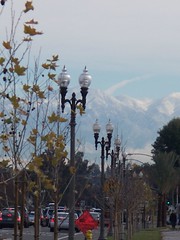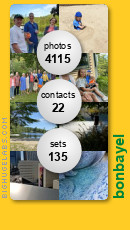If you are looking into solar panels, you might be interested in checking out the yellow banner on the right. The company has provide us with a good Q & A about how much this will cost you and why renting can be a good option for you. But be sure to check out the website at www.jointhesolution.com/bonsol to read a lot more about what we are offering. If you have more questions, just send me an email or call. I can also guide you through the sign-up process to make sure you get everything right. The main risk to this system right now is that there will be a long waiting period of up to a couple of years, because there are already 27,000 homeowners on the waiting list.
How will I be charged?
You will pay a flat monthly rental fee. This rent is determined by the amount of energy you use, the solar resource in your area and the cost of energy in your region. A system designer will come to your home, look at your roof size, angle and shading to size the system for your location. They will also look at your historic energy usage. If you are interested in saving more money and energy, they can show you simple and cost effective ways to conserve in your home. With all of that information, they will determine the size of a solar electric (PV) system that would work best for you, and give you the final monthly rental cost.Can you tell me now what my exact rental cost will be?
Until the system designer visits your house, all we can do is estimate your rent. This is because we don't have all of the information necessary to make that calculation until the system designer has examined your house and the manner in which you currently use electricity.What if the estimate I get when I sign up turns out to be different than the final actual rent? I mean, after the designer comes to my house, what if there is a big difference?
It is possible that there might be a difference. When we do the initial estimate, we assume that the conditions at your home are good for solar, that your orientation is correct, etc. It may turn out that there are reasons why your location, roof orientation, shading, etc. will accommodate a PV system but at a less-then ideal size. In that case, there may be a difference between the original estimate and the final rent. However, because there could be a difference, we do not ask you to make a commitment based on the estimate. You only make a final commitment to rent after the system has been designed. In this way, there is no possibility that you will be locked into anything without your approval. In essence, you have no risk.What do you mean "no risk?"
By submitting your Forward Rental Agreement Applications now, you reserve your position in the queue. We already have over 27,000 customers who have signed up for our solution, so the sooner we get your paperwork in the better.
If you are not comfortable with the contract for any reason, you can cancel with no penalty at anytime if you do so before the system designer comes to your home.
During the site design visit, you can also cancel with no penalty. This means that, if you find that the final rental fee is significantly different than the original estimate, you can simply cancel the agreement at that time. There is absolutely no penalty if you choose not to proceed after you have seen the final rent. There is no risk of entering into any agreement that you do not completely approve. We want you to be fully comfortable with the system design and the pricing before you accept the agreement.There are two other times when you could cancel the agreement. If you cancel for no reason after we have sent the site designer to your home, but before the system is actually installed, you may do so with no financial penalty. In that instance, however, we do reserve the right to put you on a "do not serve list" for the future. It costs a lot for our systems designers to do a site visit and we would never want to waste your time or theirs.
Finally, you always have the right to cancel the agreement after the system has been installed. Only then, if you cancel and we must return to your home to retrieve the system, under those conditions you would forfeit your security deposit.
So how do I know that your system will not cost me more money?
If you have special pricing from your utility for low income or low energy usage, our pricing could be slightly higher at the beginning. But remember that our monthly rental is locked in for entire term of the contract, so as utility prices increase, our model gets better and better.
When the solar designer comes to your house, they will finalize the size and monthly rental costs for your system. They will also put in your contract the total amount of Kilowatt hours that your system is guaranteed to produce.
If your solar system produces less than the contract guarantees, then you will get a rebate in that amount. For example, if the contract says that your system will produce 1000 kWh, and it only produces 900 kWh, that would be 10% less than your guarantee, so 10% of your yearly rental would be returned to you. If your system produces more than the guaranteed amount, than you get to use that “extra” power at no additional cost. So you see…you can win, but you can’t lose.
So do I have any risk?
You pay us no money upfront, so you have no risk prior to installation. We do not accept the security deposit until you have agreed to the final system size and design and you have signed that final paperwork. In short, you have no risk at all until the system has been installed on your home.
Even then, your only financial risk is the amount of the security deposit, usually $500.
One risk is that you will have to wait a while. There is a huge demand for our solution.
We suggest that if you can afford to buy solar now—do it. The sooner you can start using renewable energy, the better. I can help you find a great local installer if you are interested in purchasing a solar system. But if you are like most of us and you don't want to spend large amounts (for example $40,000 is an estimated average) in a technology that may become outdated, then sign up and we will rent you our solution at our risk.
What do you mean "at your risk?"
Imagine that some great new technology comes out that produces energy at 1/10th the current costs. If you have just purchased a system at $40,000, your investment is in a technology that is now outdated. You are stuck.
With us, if anything supercedes our systems, there are two possible outcomes. First, you can simply cancel your contract, even after we install in the system, and all you would lose is your security deposit. But the more likely scenario is that we would replace your system with an upgrade that incorporates the great new technology.
How much is the security deposit?
Between $500 to $1,000 depending on the size of your system.Why do different regions have different pricing?
Our mission is to provide a nationwide solution. Yet the solar resource is different in different areas of the country. By the same token, energy usage and electricity costs also vary widely across the entire U.S., from Maine to southern California, Washington State to Florida.
Unlike other solar companies, we don't want to work only in the areas with favorable conditions and ignore the other markets.
The calculations of our rental rates take into account all three of these variables (energy usage, local rates, and solar resource availability) to develop the final rent for each area. In most cases, this rent will be very close to what you are currently paying for electricity.
But, unlike your utility, which will continue to increase its rates as needed, we will lock in that rent. This means that your rent will not go up for the entire length of your contract.
This way, we provide a green solution that can actually save you a significant amount of money over the years, all the time you are producing clean, planet-saving electricity on your own home.
















